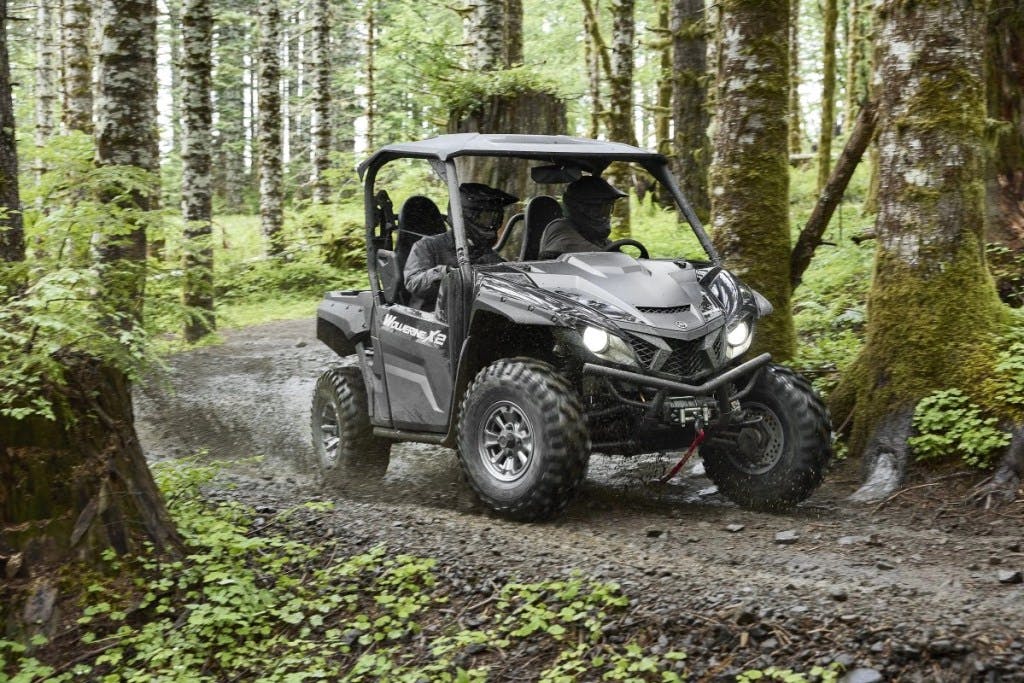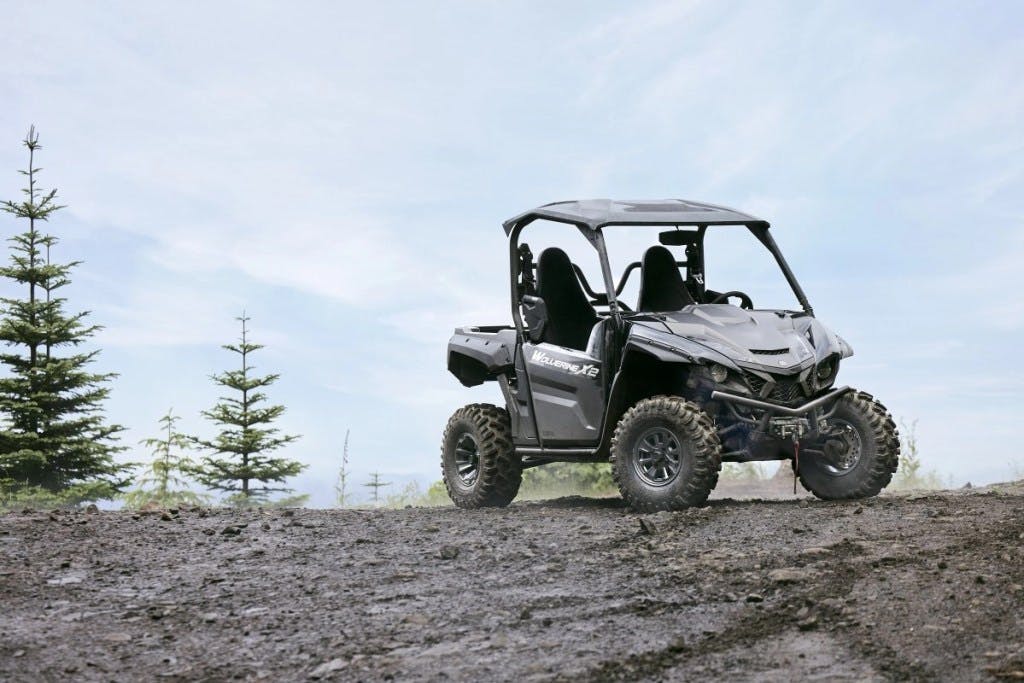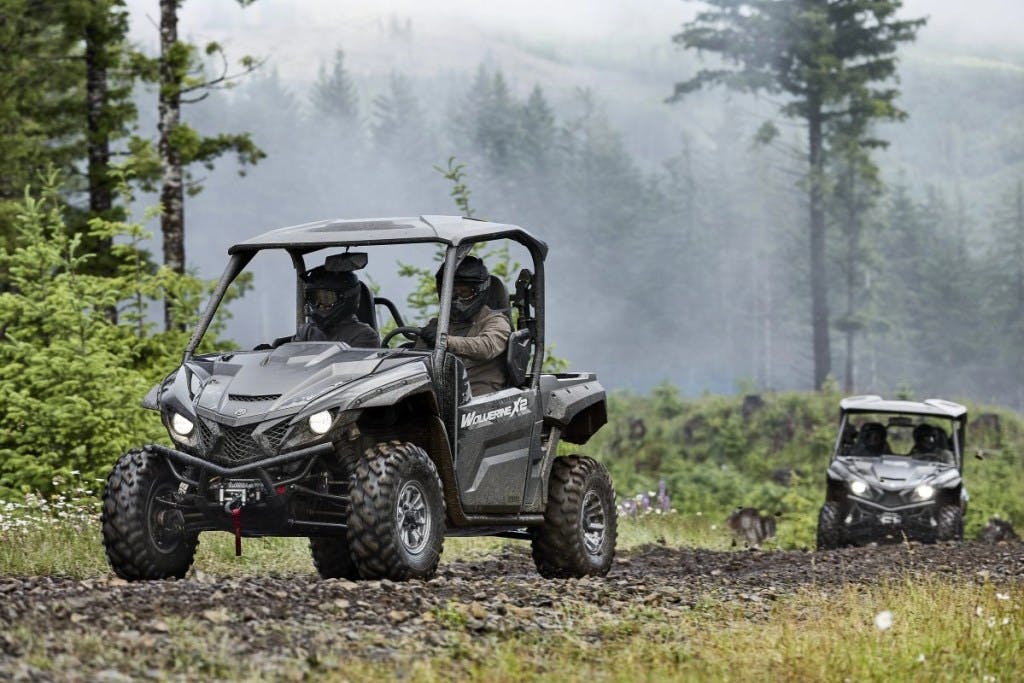2025 Yamaha Wolverine X2 Buyer’s Guide

$16,499 MSRP
• beginner-friendly
• Ultramatic transmission
• Yamaha reliability
Baby’s First Rec-Ute
It’s no secret that the Yamaha RMAX is one of the best rec-utes on the market. It’s tough, durable, and as comfortable as the day is long. But what if you want all of that in a smaller, cheaper package? Let us introduce you to the 2025 Yamaha Wolverine X2, the little brother of the RMAX.
It’s hard to argue against the X2. It’s affordable, looks great, and, while somewhat underpowered, the engine will outlast the sun. Yamaha engineers will brag all day long about the thought that went into the RMAX, from the seating position to the wheel shape, and that same thought went into the X2 850.

It’s worth mentioning that last year, Yamaha introduced the X2 1000. That rig is the exact same as the 850, just with an RMAX engine. To make the 850 a bit more desirable in comparison to the 1000, Yamaha dropped the price by $900 for 2025.
How much power does it make?
The Japanese manufacturers like to keep their horsepower numbers hush-hush, for some reason. The X2 850 is no different, and this time we don’t even get its torque. That makes it a bit harder to put in to perspective how quick the X2 850 is, but we’re going to try our best.
The 850’s power delivery is… fine. The 847cc parallel-twin moves the 1,704-pound chassis down the trail with ease, but if you’re expecting something that’s powerful for its size and can keep pace with other rigs on the trail, try again.
Where rigs like the Yamaha RMAX or Polaris General blur the lines between rec-ute and sport, the X2 850 plants itself firmly as a rec-ute. The conservative power further proves that, even with its misleading sporty styling.
What makes it special?
Some side-by-sides in the X2’s class can feel like an afterthought, like the manufacturer just pulled from the parts bin and threw it together on a whim. But that’s not the case with the X2 850. The details feel well-thought-out, and you can see that love and care all over the rig.
Part of that is because the X2 850 was the very first Wolverine model. That’s right, the X2 850 debuted in 2018, making it three years older than the RMAX. A ton of the features we’ve come to love on the RMAX, like the soft-touch points and Ultramatic transmission originated in the X2 850.
Speaking of the Ultramatic transmission, you won’t find a more reliable box on any other side-by-side. So reliable, in fact, that Yamaha offers a 10-year belt warranty for the transmission. That’s possible thanks to an automatic centrifugal clutch that maintains constant belt tension, reducing wear and tear on the belt. Other features include a sprag clutch, allowing all-wheel engine braking.

Why do I want it?
Starting at just $16,499, it’s hard to find a side-by-side that’s more reliable for the price. Does it lack on capability and features? Sure, but does that matter when it’s this cheap?
As we mentioned earlier, the Ultramatic transmission makes changing CVT belts a thing of the past. Getting rid of one of the most annoying parts of owning a UTV is huge, and makes it that much more desirable for a beginner.
Because of its small frame, it’s light and nimble on the trail; looking at you, East Coast riders. While that can become less-desirable as your riding skill increases, it’s hard to beat when you’re just starting your side-by-side journey.
And with a 2,000-lb towing capacity and a 600-lb bed capacity, this thing can work for you. It’s no one-trick pony.
Why don’t I want it?
In today’s UTV market, the X2 850 just doesn’t hold up to its competitors. The Yamaha RMAX and X2 1000 are both better rigs, period. The only downside to them is the price.
And sure, it makes sense to stick a beginner in a Wolverine X2 850. But if they’re taking it to the trail every weekend, they’re going to outgrow it very quickly. Seeing your buddies tackle obstacles that leave you out isn’t a great feeling, and pretty soon you’ll be looking into other rigs.

What trim do I want?
This is an easy one, as the only available trim is the Wolverine X2 850 XT-R. Trim features include a Warn winch, XT-R graphics, rearview mirror, and adjustable KYB piggyback shocks.
If I like this… what else should I look at?
Other side-by-sides perfect for beginners include the Can-Am Commander, Polaris General 1000, and Honda Pioneer. If you want the same package with more power, check out the Yamaha X2 1000 or the RMAX. And if you want something a bit more sporty, the Polaris RZR XP and Can-Am Maverick X3 Turbo are both great options.
2025 Yamaha Wolverine X2 850 Specs
Length: 115 in.
Width: 62.2 in.
Height: 75.3 in.
Wheelbase: 83.7 in.
Claimed Dry Weight: 1,704 lbs
Engine: parallel-twin
Displacement: 847cc
Transmission: Ultramatic V-belt with all-wheel engine braking CVT
Claimed Power: N/A
Claimed Torque: N/A
Fuel System: Yamaha Fuel Injection (YFI)
Steering: EPS
Drivetrain: 2WD, 4WD, full diff-lock 4WD
Front Suspension: Independent double wishbone with anti-sway bar, fully adjustable KYB piggyback shocks w/ 8.7-in travel
Rear Suspension: Independent double wishbone with anti-sway bar, fully adjustable KYB piggyback shocks w/ 9.3-in travel
Front Brakes: Dual hydraulic discs
Rear Brakes: Dual hydraulic discs
Wheels F/R: 12 in. aluminum
Tires F/R: AT27 x 9-12 GBC Dirt Commander (front), AT27 x 11-12 GBC Dirt Commander (rear)
Bed Capacity: 600 lbs
Towing Capacity: 2,000 lbs.
Seating Capacity: 2
Ground Clearance: 11.5 in.
Fuel Capacity: 9.2 gal
